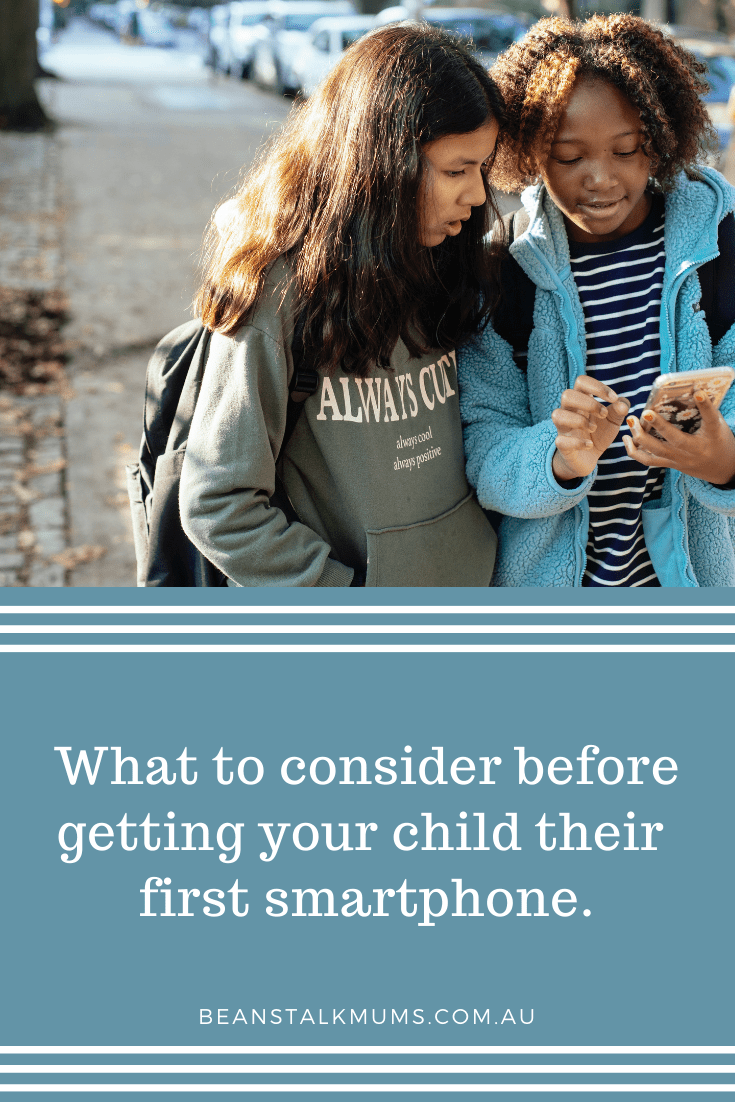
Today, there’s no getting away from tech as it’s become an integral part of our lives.
Kids are getting smartphones at younger ages than ever before, and even if you’ve been trying to shield your child and let them be a kid for as long as possible, there comes a time for every parent where their child wants to be more connected to the wider world through technology.
Getting a smartphone can be a very good thing for kids these days – not only does it provide them with a way to stay in touch with you and their friends, but it can also support their learning and education with the right guidelines and rules in place.
Here are some of the main things to consider before getting your child their first smartphone.
Is Your Child Ready for a Phone?
Every child is different and as their parent, only you know them well enough to determine if they are ready to have their own smartphone.
Consider a range of factors such as your child’s age and maturity level – do you trust them to use a smartphone responsibly under your guidance?
Most kids start to get their own smartphones as they reach the pre-teen years, and if your child’s friends all have or are getting smartphones of their own, it’s a good indicator that it might be time for your child to have one as well. This is especially true if your child is starting to spend more time with friends these days and is gaining their independence; having a smartphone will help to keep them safe by providing them a way to contact you if needed or call for help in an emergency situation.
Type of Phone
First of all, what type of phone will you get your child?
Chances are that you don’t want to get them anything too expensive for their first handset, especially if they are still young since there’s always the risk of it being lost or broken.
Hand-me-downs are often a good option for a kid’s first handset so if you have your old phone still or know a family member or friend who’s upgrading their contract, it might be worth doing this to save money while introducing your child to the world of smartphones.
If you want to buy a handset for your child, refurbished options are a good idea since they are often cheaper than brand new, but just as good. You can also often find older handset models available refurbished compared to brand-new ones.
Type of Phone Plan
There are various different types of phone plans available to suit your circumstances. When getting your child their first smartphone, you may want to consider;
- Adding them onto your own smartphone plan if this option is available
- Getting them a separate smartphone contract
- Opting for a SIM-only contract or Pay and Go option
Pay and Go options often come with bundle choices that are ideal for kids since you are not tied into anything and can be flexible about how much you pay. For example, Lebara offers a range of thirty-day bundle options with no contract that you can change on a monthly basis if you wish. These Lebara bundles start at just $14.90 for unlimited minutes and texts, 3GB of data, and 300 international minutes, which can be very useful if you have relatives or friends abroad that your child may want to call.
Ground Rules for Kids With Smartphones
As a parent, it’s up to you what kind of ground rules you want to set for your child when it comes to using their smartphone.
Kids can easily become addicted to using their phone and the last thing that you want is them staring at the screen all day long, so it’s a good idea to set some rules about screen time and when they are allowed to have their phone. Some parents, for example, have their child leave their smartphone downstairs at night to avoid them getting distracted by their phone in bed.
It’s also worth considering which apps you want your child to avoid using. For this reason, many parents allow their children to have a smartphone but draw the line at allowing their child to use social media. Social media can be very dangerous for kids, so if you’ve decided that you’re going to let your child use it, it’s important to have a serious conversation with them beforehand about the dangers of cyberbullying and why they should not speak to anybody that they don’t know online. Generally speaking, most social media platforms allow anybody over the age of 13 to sign up so if your child is younger, it is not advisable to allow them to join just yet.
Parental Controls
To give you some extra peace of mind, you may want to consider installing parental control tools on your child’s smartphone. There are various parental control options available with different features to choose from.
Most smartphone networks will come with built-in parental controls where anything that isn’t suitable for an audience under the age of 18 is blocked while using data. However, there are easy ways to get around this – such as using a Wi-Fi connection that doesn’t block anything that isn’t family-friendly – so it might be worth considering the option of using a separate parental control app for your child. This allows you to block anything that you wouldn’t want your child looking at online such as violence or pornography, and some parental control apps will also give you the option of blocking your child from downloading certain applications that you don’t want them to use.
Many parental control apps also have GPS tracking features, which can be very handy for keeping your child safe.
Spending Money
Today, a common problem that many parents face is children spending tons of money on in-app and in-game features when using their smartphone – on their parent’s credit or debit card. Many apps make it easy to spend money without even realising how much you are spending, even if you’re spending your own money – so it’s easy for kids to do this without grasping how much they are actually costing you over time.
To avoid losing your money in this way, it’s a good idea to make sure that if you’re going to attach your own payment details to your child’s smartphone, there’s a strong password in place that your child doesn’t know when it comes to making payments for certain apps or in-app features.
If you are happy to allow your child to spend a certain amount of money on apps or in-app features it might be worth topping up an iTunes or Google Play Store gift card for them to do it this way.
Promoting Safety Online
The good news is that online safety is often taught in schools today, so chances are that your child already knows about keeping themselves safe online when using a smartphone or another device connected to the internet.
Speak to your child on a regular basis about online safety and make sure that they know that they can come and speak to you if they find anything that makes them feel uncomfortable online, or feel that they are being bullied.
Kids are using smartphones earlier in life than ever before. And while this can be a scary thought for some parents, the good news is that there are plenty of resources to help your child stay safe online and enjoy using their new tech.














